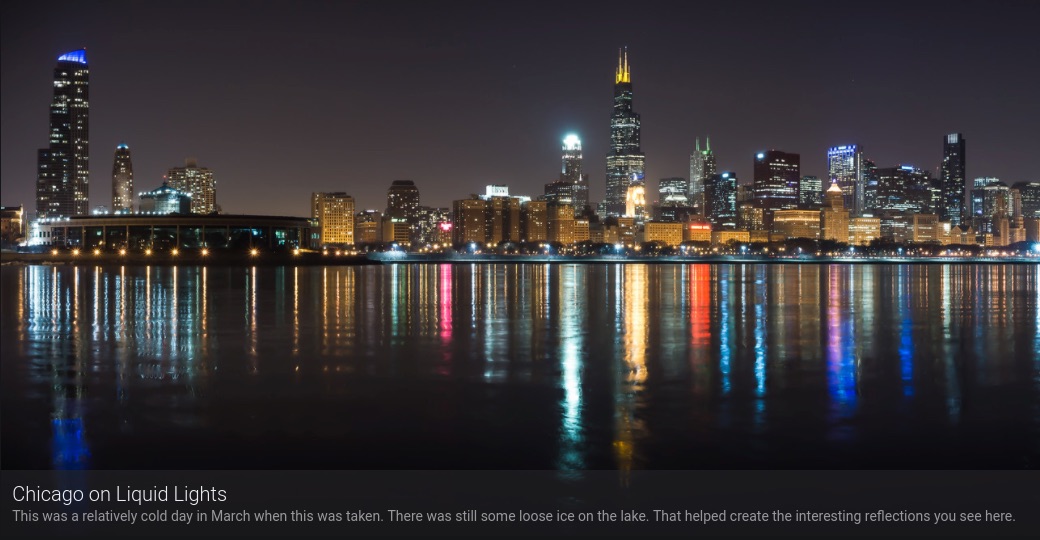They say a picture is worth a thousand words. While that may be true, captions are still an essential ingredient in your photography website. However, coming up with them can be challenging.
When done correctly, captions can help you engage visitors and make them want to keep clicking through your galleries. You can use them to enhance your images by adding context and providing new information. Plus, you can approach them with as much creativity as you wish.
In this post, we’ll discuss why quality captions matter. Then we’ll provide you with three tips you can use to write them. Let’s get started!
Why Image Captions Matter for Your Photography Website
Some photographers make the mistake of assuming captions are irrelevant. You may even be guilty of skipping this part of the process of publishing images on your site, or of adding just a few words without much thought. After all, it’s the photo you want people to notice.
However, captions can be an effective way to provide your site’s visitors with more context. You can share new information they may not pick up just from looking at the image itself.
There are many different ways to put captions to work on your site. You can tell a story about what is taking place in the image or provide background details about the photo’s subject(s). You can also use them to emphasize a certain mood or emotion.
In addition to the images on your photography site, this is also the case for your social media posts. Writing quality captions for Instagram and other platforms can help show followers and other users why your content is valuable and encourage them to check out your work.
3 Tips for Writing Quality Image Captions for Your Photography Site
You don’t need to be a professional writer to craft text to accompany your photos effectively. Here are three tips you can use for creating quality image captions for your photography site.
1. Match the Caption With the Tone of the Image
When writing your captions, it’s helpful to make sure the tone aligns with that of the image. For example, if you have a serious photograph, it doesn’t make much sense to use funny, light-hearted text alongside it.
You likely want your photographs to elicit a specific mood. Captions present an opportunity to emphasize further and evoke that emotion. Doing so can have a more meaningful impact and enable an image to resonate with people in ways it otherwise wouldn’t.
Humans of New York effectively accomplishing this by using quotes from the project’s subjects as captions for their corresponding images:
Similarly, if you’re struggling to come up with your text, you might consider using a famous quote that appropriately matches the tone and context of your image.
2. Avoid Making Assumptions or Using Judgemental Language
When writing your captions, it’s vital to try to avoid making assumptions or using judgemental language. The goal isn’t to impose your opinion on the viewer. For example, it’s not the best idea to describe the mood of a photo’s subject if you don’t know what they were feeling at the time.
Let’s say you have a photograph of a man sitting alone on a bench. A strong caption could be something like, “Man sits alone on a Central Park bench during a crisp, October morning.”
On the other hand, “Lonely man sits alone feeling sad” assumes the subject is experiencing negative emotions. In reality, he may be perfectly content spending the morning in the park by himself.
To avoid assumptions and judgment in your captions, focus only on facts and objective, accurate information. Aim for conversational language, as if you were talking to a friend.
Also, your captions need to be correct in terms of spelling, punctuation, and fact-checking. Otherwise, you compromise your credibility.
3. Ensure Your Captions Are Adding Value to Your Images
Captions can and should be used to provide new information, rather than repeating what’s already known. For example, if you have an image of a mountain, so there’s no need to caption it “mountain.”
What your audience might not know, however, is which mountain is in the photo. You could give some context by including the landform’s name, its location, and the date the photograph was taken.
Additionally, people typically view an image first, then read the caption. Therefore, you can eliminate words that state the obvious, such as “is shown” or “captured,” as both are implied.
An excellent example of this is the following image and caption by photographer Adam Dooley:
At first glance, it’s obvious this is an image of a city skyline over water. Many might even recognize it as Chicago. Dooley, however, uses the caption to add more value by incorporating descriptive details, including that the photo was taken in March and that it was cold outside.
He also points out the loose pieces of ice that helped create stunning reflections. This simple note adds contextual detail and background that allows viewers connect to the image and feel like they were there in the moment.
If the image is of people, another strategy would be to use the caption to identify who they are. Perhaps there’s something in the image you want to make sure viewers notice, like Dooley’s ice. In this case, you can use the text to draw their attention to that specific detail.
Conclusion
As a photographer, you no doubt, have a knack for creating stunning images to share on your photography website. However, to give your visitors the best viewing experience possible, it’s wise to craft captions to accompany each piece.
In this article, we discussed three tips you can use to write quality captions for the images on your photography site:
- Match the caption with the tone of the picture.
- Avoid making assumptions or using judgemental language.
- Ensure your captions are adding value to your images.
Do you have any questions about writing image captions? Let us know in the comments section below!


